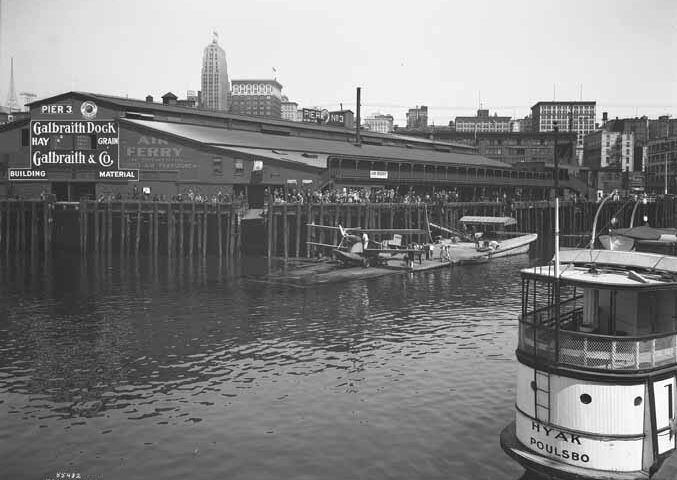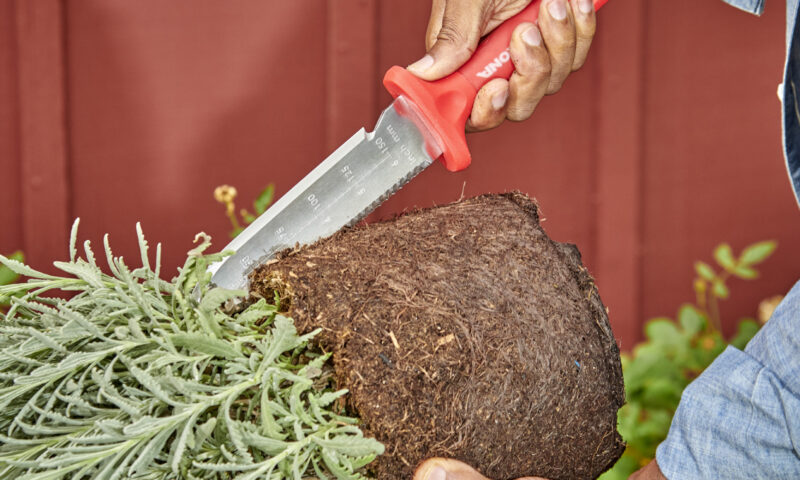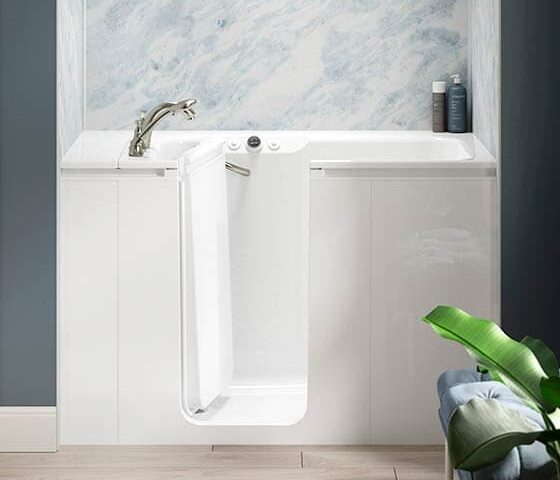‘Asahel’ documents preservation of his historical photos
(Pictured: Asahel Curtis took this picture in 1929 of Galbraith Dock on the Seattle waterfront. The steamship Hyak Poulsbo (lower right) and the double-wing airplane ferry to Bremerton and Gorst in Kitsap County (middle) are tied up at piers. Downtown buildings are seen in the background.)
The race to preserve 60,000 priceless and fragile photographs capturing the diversity of Pacific Northwest life during the last two centuries is the subject of a documentary from Cascade PBS.
Most of the images—made by photographer Asahel Curtis from the 1890s to 1940s—have remained in boxes and unseen by all but a handful of people for the past 80 years. “Asahel: The Curtis Collection,” relating the Washington State Historical Society’s purchase of and ongoing effort to digitize the massive collection for free public use, is available to stream via the Cascade PBS app and at cascadepbs.org
“Every day is an adventure as we digitize images,” said Margaret Wetherbee, head of collections at the Historical Society. “What will we find? Steam engines, historical fashion, or signs for businesses long forgotten? These moments provide a glimpse into the lives of Washington’s past residents.”
The images are fragile, captured on glass plates or nitrate negatives. Because they’re susceptible to combustion, the originals are at risk and must be stored in climate-controlled vaults. Each image is being scanned in time-consuming process to ensure the collection survives, Weatherbee said.
During his career, Curtis often made images of everyday life in the Northwest: People at work in barbershops and flower shops, on the waterfront, in logging camps. He also produced photographs of the region’s natural wonders, including ice caves, mountain peaks, and coulees.
The Curtis collection “is a gold mine of history and connection for the people of the Pacific Northwest and beyond,” said the documentary’s co-producer, narrator and historian, Knute Berger, who also hosts Cascade PBS’ “Mossback’s Northwest.” Public access to the photos “will likely change—and will certainly enrich—our view of the region and its people,” he said.
Asahel (pronounced “AY-shul”) Curtis, who died in 1941, is the brother of the even more famous photographer Edward Curtis, whose life’s work aimed, incorrectly, to portray Native Americans as people on the verge of extinction. While Edward Curtis’ portfolio is appreciated in some cases for its historical value, today it’s also criticized for distorted perspective and damaging impact.
The Curtis brothers parted ways early in their careers and took different approaches with their work.
“Connecting to our past is really about empathy and being able to empathize” with what people experienced and “to gain understanding of our own experience,” Jennifer Kilmer, director of the Washington State Historical Society, says in “Asahel: The Curtis Collection.”
Cascade PBS is a public media organization serving the Northwest with Public Broadcasting
System national and local programming, independent news and investigative journalism.


